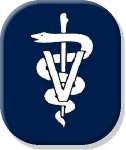
Hello again, and thank you for your patience with my well-spaced apart blog posts. As mentioned in my previous post, I have begun my first primary care block: orthopedic surgery. Needless to say, I was completely overwhelmed last week since I had to learn all the paperwork and other inner-workings of the hospital as I went. On average I was at the school 14 hours/day last week, with one day clocking in at 17 hours. Much to my relief, I have a moderate grasp on how things are run and should not have to spend so much time at the school with the piles of paperwork. In all honesty though, I don't think I've been so stressed out in my entire life, and I know it's just the beginning. While learning all those inner-workings, I'm still in charge of the care of my patients. On top of all of this, I need to spend time reading selected topics for when we have rounds with the doctors. While the surgeon I'm working with on this block is a great teacher, he can really come off as intimidating sometimes, especially when in surgery and he points to some structure and says, " What's that?". Now I can move on to talking about what I've seen thus far.
My first case was a bit of a complicated one unfortunately. A small dog was presented to the teaching hospital because of getting hit by not one, but two cars. Amazingly enough, the dog appeared at first to only come out of the incident with multiple fractures of his pelvis; i.e. he had no pulmonary contusions, no broken back, no internal bleeding, etc. However, after the first day of taking care of him, I was convinced that there was just something not right about his mentation, so I insisted on having a consult with a neurologist. After the neurologist took a look at the dog, he discovered the dog suffered some damage to his right forebrain, causing him to be partially blind in the left eye and had some deficits in the function of his left front limb (probably the left hind limb, but they were evaluated because of his fractured pelvis). One thing that is of immediate concern with trauma to the hips is nerve damage to the urinary and gastrointestinal system leading to urinary and fecal incontinence, and thankfully this dog had neither.
To make a long story short, we took him to surgery and placed a plate on one side and used a large screw in another area of trauma. After surgery, we took some post-operative radiographs and the surgeon was very pleased with the results. The next couple of days were all about evaluating the dog's level of pain, ensuring no nerve damage during the surgery, continued evaluation of the dog's mentation, and the return to use of the hind limbs. Thankfully, by the end of the week, the dog was standing up, taking very short strides, started wagging it's tail, and did not seem as painful when handling his hips. While it was certainly pleasing to help the dog out, the client was the factor that made this case so pleasing and reminded me of why I chose this profession amongst all of my stress and paperwork. The client was a really nice elderly gentleman who's wife has lived in a nursing home for years. It was absolutely gratifying knowing that I helped his lil' buddy who's there to keep him company when he can't be around his wife. He was so happy when he picked up his buddy seeing how well he has begun to improve already.
That's all for now, stay tuned for my next post about the most common orthopedic problem in dogs...the rupted cruciate ligament (aka "tearing an ACL" in people). Oh....I didn't have time to take any pictures this week (and I need to be careful about confidentiality) so I've included a picture of my bulldog. :)


No comments:
Post a Comment